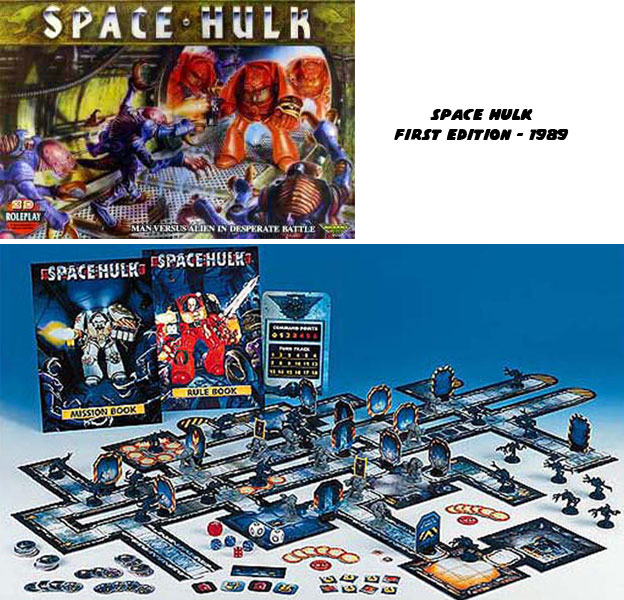
The game was unique for several reasons, but the most important were the introductions of the Terminator Armor Space Marines and the alien enemies known as Genestealers. An entirely new chapter of 40K lore was written in Space Hulk. It was explained that the First Company of each Space Marine chapter consisted of the most experienced and capable warriors from each unit. They were the ones tasked with the most dangerous missions and as such had access to the most powerful weapons and armor. The Terminator Armor was created for the most inhospitable environments. It was bigger and stronger than the standard Power Armor and treated with the reverence of a holy relic. These suits of armor were worn in battle but had gained a reputation for being used while being deployed in a Space Hulk. So what is a Space Hulk? In the 40K universe spaceships are able to cross the galaxy by using the Warp. It is like crossing through a wormhole or tear in space that unites systems that are countless light years apart. The ships have to have powerful reactors in order to escape the gravity well created by the Warp, as well as not to be torn apart by the forces within the Warp which bend time and space as well.
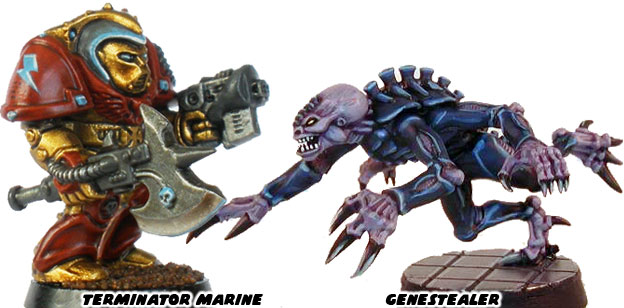
Anyhow, some ships are damaged in the process or have engines that break down and cause the ships to be stuck in the Warp. They will pop in and out of the universe from time to time before being pulled back into the Warp. Some of these ships have weapons and resources that are attractive to scavengers. Aliens and humans alike will risk everything to board one of these vessels. After thousands of years of being adrift in the Warp some of the ships are fused together and get stuck in asteroids and other debris that makes its way into the Warp. These enormous floating piles of debris are often bigger than cities and may even reach the size of a state or nation. They are dubbed Space Hulks and are an ominous sign when they appear near inhabited planets. The reason they are bad news is because within the Space Hulk there are often diseases or even alien species that may easily wipe out an inhabited planet. Those foolish enough to try to salvage the Space Hulks, explore the wreckage of the ships or asteroids they are tied to don't always make it back to port with their bounty. Orks sometimes take over a Space Hulk, put engines on it and raid outposts. This was the plot of the THQ multi-player video game Warhammer 40,000 Kill Team.
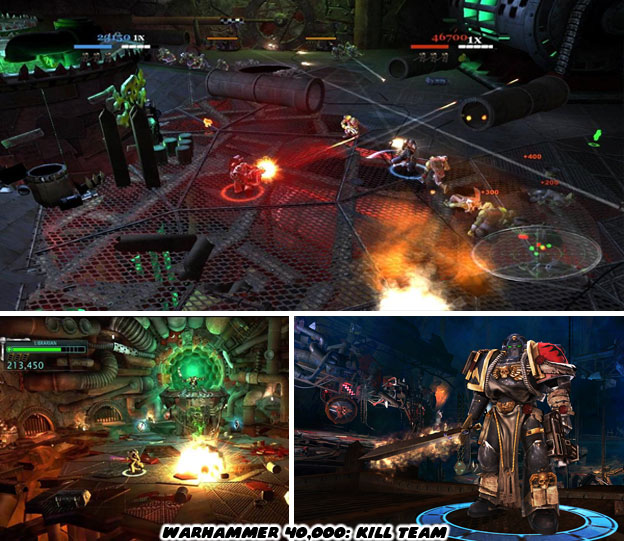
Just like the video game there is something far more sinister than Orks lying in the bowels of the oldest and most traveled Space Hulks. The Space Hulks can be lost for countless generations in the Warp. They may turn up in yet uncharted parts of the galaxy and when that happens an alien race may board them and then hibernate, waiting for a foolish explorer to wake them from their slumber. This is the case with the Genestealers. They are an alien shock troop that is the first wave of a species that would later be known as the Tyranid. The Genestealer was modeled after the H.R. Geiger Alien. They are huge, covered in a carapace stronger than steel, quite strong and can even survive in the vacuum of space. Traditional Space Marine armor and weapons are not powerful enough to handle wave after wave of the Genestealers. This is why the Terminators are called in whenever a Space Hulk appears near an Empire-controlled portion of the cosmos.
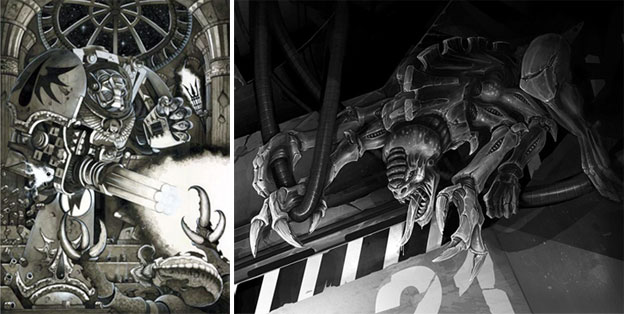
The Terminators have a set of missions that they can complete in the original boxed game. Sometimes they have to recover a relic from a Space Marine chapter, sometimes they have to find a piece of crucial data from a system computer. Often they have to ensure that there are no Genestealers on board and try to poison the life support systems if they are still functioning so that they can eradicate the threat before the ship slips back into the Warp. The game allows players to explore tight corridors and engage in firefights with scores of Genestealers. Anyone that has seen the film Aliens can remember how intense it is to fight wave after wave of alien with limited resources and in tight quarters. Space Hulk ramps up this concept tenfold and makes surviving each map all the more intense. Speaking of the maps, the original game also came with printed cardboard tiles and doors that could be assembled in any number of layouts. This ensured that the game would constantly keep evolving and offer a different experience each time a player started a campaign. The other thing these printed pieces did was help immerse the player into the game. Those with limited hobby experience didn't have to build or paint any terrain. Each piece was highly detailed, the tiles were painted by Games Workshop artists after all. The boards made it easy to imagine that the Terminators were battling for survival in the maze-like Space Hulk.

Space Hulk did such a great job at capturing even non traditional tabletop audiences that it was turned into a PC game by Electronic Arts in 1993. The PC game did a fantastic job of recreating the isolation and horror of each mission. Genestealers would lurk at every turn and you would find yourself saying a prayer to the machine spirit that your heavy bolter wouldn't jam during an intense firefight. In the science fiction genre it was a refreshing change of pace, it worked because of the liberally sprinkled horror elements as well. It was unlike anything the US and Japanese studios were producing. Best of all the PC game was getting people interested in the universe of 40K. Space Hulk, the tabletop and PC versions would receive expansions.
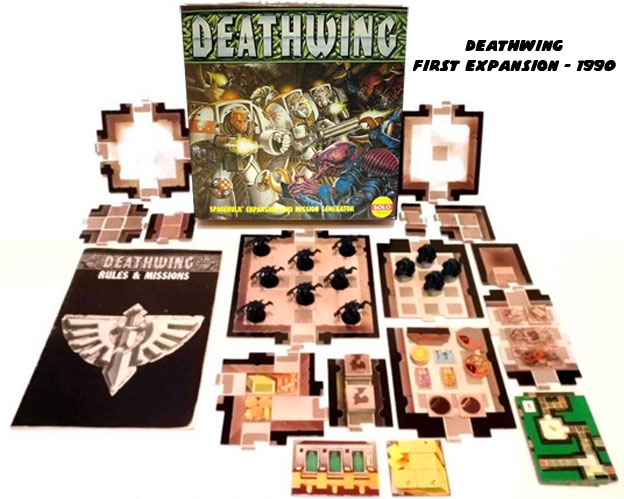
The Deathwing expansion came out in 1990. It would begin to flesh out the Tyranids as well as the other alien species that called the Space Hulk home. The games also helped shed some light on the Dark Angels and Blood Angel Space Marine Chapters. Two of the oldest and most tragic chapters from the earliest days of the Empire. The popularity and longevity of the game was apparent when Fantasy Flight Games released a CCG (collectible card game) based on Space Hulk. The new game called Death Angel came out almost 20 years after the original tabletop game. It instantly brought audiences up to speed on the elements that made the original game so memorable. Players had missions, could arm themselves with rare items or even hunt down opponents as Genestealers. The card game and the expansions that followed could be found in most book stores and even toy stores. This was one of the few Games Workshop systems that found a bit of mainstream success. The popularity of which would bring a few generations into the larger system of Warhammer 40,000.
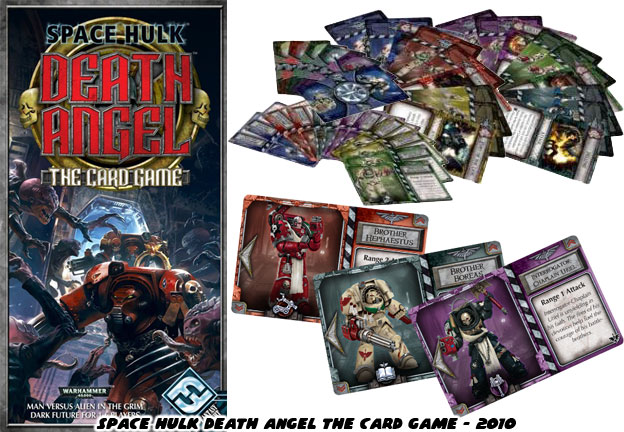
Because of Space Hulk all new models and rules would be created for the Tyranids. Not only that the entire alien race would be fleshed out. Genestealers would only be one type of troop. There were small, spore-like Tyranids that acted like land mines, releasing toxins and poison quills to those that approached them. There were larger Tyranids, like the Carnifex that were the size of tanks and could peel them apart like a tin can with their massive claws. There were even Tyrnaid large enough to fight against Titans! Tyranids were becoming the alpha-predator in the 40K universe. They would eat and harvest the DNA of every species they came across. This caused the troop types to mutate and gain the best traits of a particular species. Some became bulky and strong thanks to Ork DNA. Some became powerful psychics because they had absorbed Eldar DNA. Because of this new threat the Space Marines would get a boost in new weapons and armor as well.
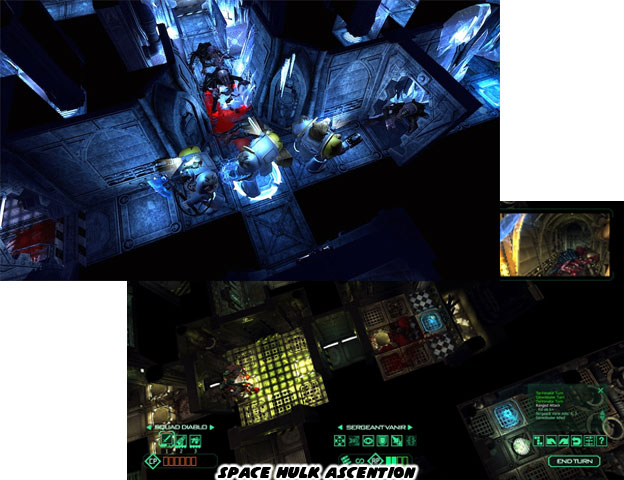
The love of the Space Hulk never died off. In 2013 the PC game was remade, called Space Hulk Ascension. It helped spark renewed interest in the universe. That same year Games Workshop would publish a third-generation of the game with all new rules, models and tiles. Games Workshop made sure to use the latest advances in publishing and released a superior product. The old illustrated cardstock tiles were replaced with thicker, higher quality embossed tiles that featured digital renderings. The printing on the tiles gave them the illusion of depth, light and even texture. One of the problems with the old cardstock tiles was that they were flat-edged, this did allow each tile to perfect align to the next but they often slid around on a table. The new tiles had jigsaw edges so that they could all interlock. The majority of the miniatures that Citadel created for the Games Workshop systems were metal, originally lead but then later on they went to pewter. The plastic miniatures that Citadel developed in the late '80s and early '90s were well done but lacked the same level of detail of metal miniatures. Citadel went with plastics for the self-contained systems, they were cheaper to produce and less prone to bending as a metal figure. The plastic models were used in boxed sets like Blood Bowl, Heroquest and Space Hulk.
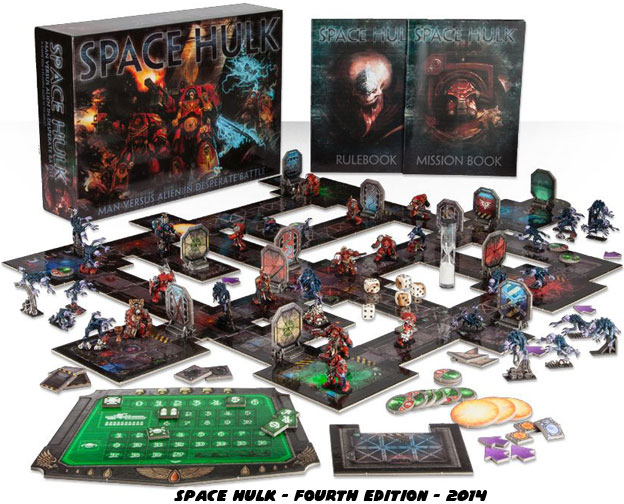
The original Space Hulk featured printed cardstock tiles that allowed gamers to create their own mazes, scatter objectives and never have the same experience twice. The combination of plastic miniatures and printed cardstock tiles worked very well for the genre. Audiences didn't have to invest time or money in building elaborate sets to play in, although some of the more hardcore gamers did just that. In fact a few companies popped up featuring easy-to-assemble terrain, much of which was pre-painted or pre-printed so it complimented the Space Hulk rules. What Games Workshop did was create a bridge between the tabletop roleplay system of Warhammer 40K with more traditional board games. By limiting the movement to corridors and small open rooms the studio streamlined the rules on movement, ranged and melee attacks and line of site so that audiences could pick up the gameplay much faster than 40K. In the fantasy world GW did the same thing with Warhammer Quest, which took the characters and rules of Warhammer Fantasy Battle and made it an easy to pick up system with mazes that audiences could randomly build.
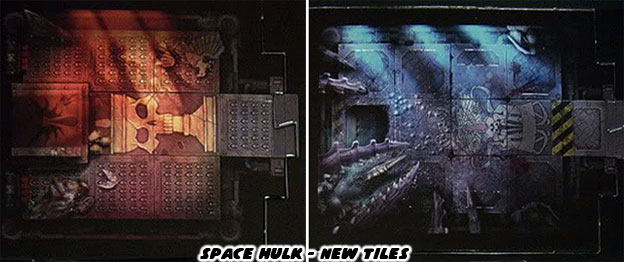
Space Hulk and the other boxed games from the studio, which I will highlight on future blogs, were gateway systems for the hobby and in some cases could even be found in large-scale toy stores. The plastics manufacturing process had improved greatly over the decades. When Space Hulk was relaunched the miniatures created for the game were amazing. The characters had individual dynamic poses, both the Terminators and Genestealers and an unparalleled level of detail. Even the relics being searched for got a makeover thanks to the Citadel modeling department.
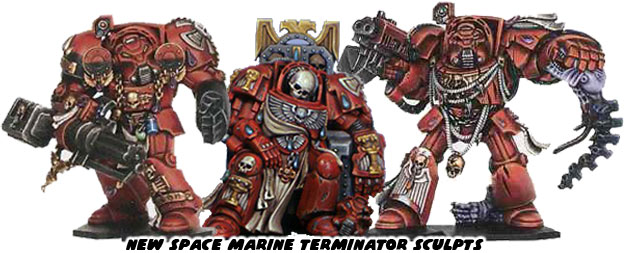
The third and fourth editions of Space Hulk won several awards and the accolades of gamers and editors the world over. It gave Games Workshop the confidence to pursue other self-contained boxed sets, which was something they hadn't done in years. Before I go too far into the science fiction worlds that Games Workshop created I want to go back and explore the fantasy systems that helped put them on the map. You see if Space Hulk was a great introduction to tabletop role playing systems for sci-fi there was something even more successful for fantasy. The next blog will look at this system. As always if you enjoyed this blog and would like to sponsor me please visit my Patreon page and consider donating each month, even as little as $1 would help make better blogs and even podcasts!

No comments:
Post a Comment